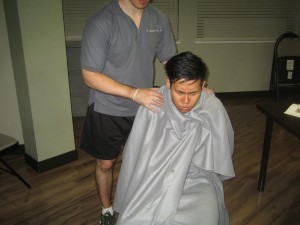
Shock is a fatal condition that results from the body not getting enough blood that is commonly characterized by hypotension requiring immediate medical help.
Shock is a life-threatening condition that roots from the body not getting enough blood supply, which can damage the organs of the body. The blood carries the oxygen and other essential nutrients. When there is not enough blood supply, this means that the body is not getting the necessary nutrients that allow it to complete its function. When these substances are lost more quickly than it is replaced, the body organs begin to fail. Thus when the heart begins to fail pumping enough blood, symptoms of shock begin to show. Its main symptom is hypotension (low blood pressure). Shock requires immediate medical attention and treatment. If left untreated, it may lead to permanent organ damage or worse, death. Shock is the same as circulatory shock.
Types of Shock
There are several different types of shock that are all severely life-threatening if left untreated. The following are the types of shock:
- Hypovolemic shock: caused by great volume losses of blood and fluids
- Cardiogenic shock: linked to heart problems
- Anaphylactic shock: caused by a severe allergic reaction
- Septic shock: linked to body infections
- Neurogenic shock: caused by damage to the nervous system
Causes of Shock
The following are the main causes of shock:
- Heart problems, such as heart failure or heart attack
- Trauma
- Heatstroke
- Extreme blood loss, whether internal or external
- Dehydration
- Allergic reaction
- Severe infection
- Poisoning
- Burns
- Certain medications that may affect heart function or blood pressure
Signs and Symptoms of Shock
Signs and symptoms of shock will depend on the type of shock and the severity of the damage done t the body. However, it must be noted that all symptoms of shock are fatal and must be treated as medical emergencies. The following are the symptoms of shock:
- Extremely low blood pressure
- Chest pain
- Cyanosis of the lips and fingernails
- Quick heartbeat but weak pulse
- Little or no urine output
- Excessive sweating
- Pale, cool, clammy skin
- Short, shallow breaths
- Dizziness or light-headedness
- Anxiety
- Confusion
- Loss of consciousness
First Aid Management for Shock
A person should call for emergency medical services immediately for symptoms of shock. While waiting for the paramedics, apply first aid to help avoid complications from developing. The following steps are generally recommended:
- Call for emergency medical services immediately or have someone drive the victim to the nearest emergency room.
- Check the victim’s circulation, airway and breathing. If necessary, initiate rescue breathing and CPR.
- Constant check rate of breathing every five minutes even if the victim is capable of breathing on his or her own.
- If the victim is conscious with no injury to the head, neck, spine or leg, lay the person down flatly with the feet elevated about 12 inches to increase circulation. The head should not be elevated. This is called the shock position. However, if there is a suspected head, neck, back, or leg injury, do not move the individual’s position unless there is danger in the immediate environment.
- If there is bleeding, broken bones or other injuries, apply appropriate first aid.
- Keep the person warm by covering with a blanket or coat. Loosen any tight clothing.
- If there is no injury, turn the victim’s head to the side to avoid choking. If there is a suspected spinal injury, hold the person’s head, neck and back in a line and roll the victim to the side as a unit.
Disclaimer: This article does not provide medical advice and should not be substituted for formal training. The information given should not be used for self-diagnosis. Seek medical attention when necessary. It is important to recognise medical emergencies at all times to avoid complications from developing. To learn more about to how to treat and manage shock victims, enrol in Canadian and American workplace approved first aid courses.
Sources:
Shock. (2010). National Institutes of Health. Retrieved October 16, 2013, from http://www.nlm.nih.gov/medlineplus/ency/article/000039.htm
